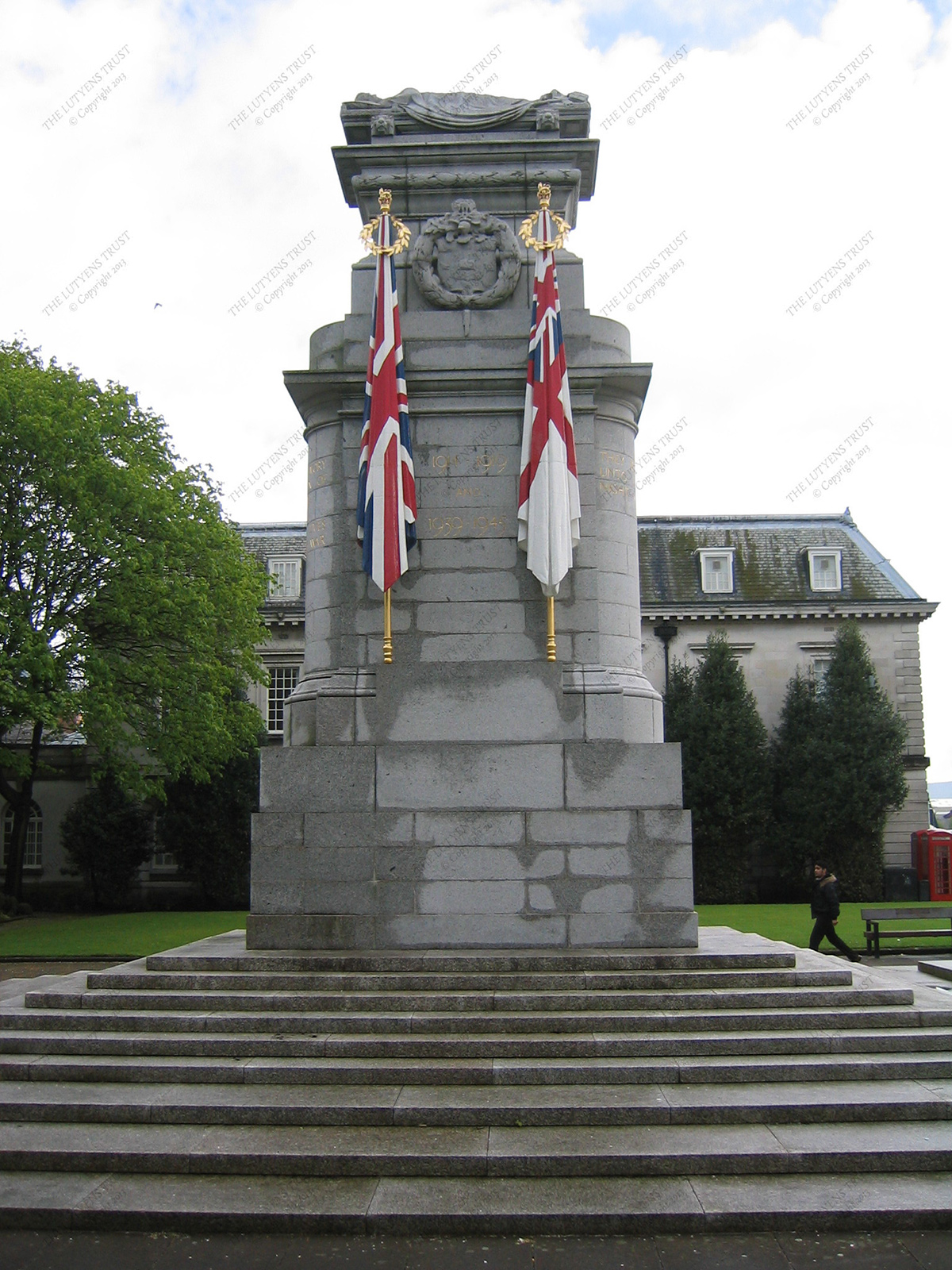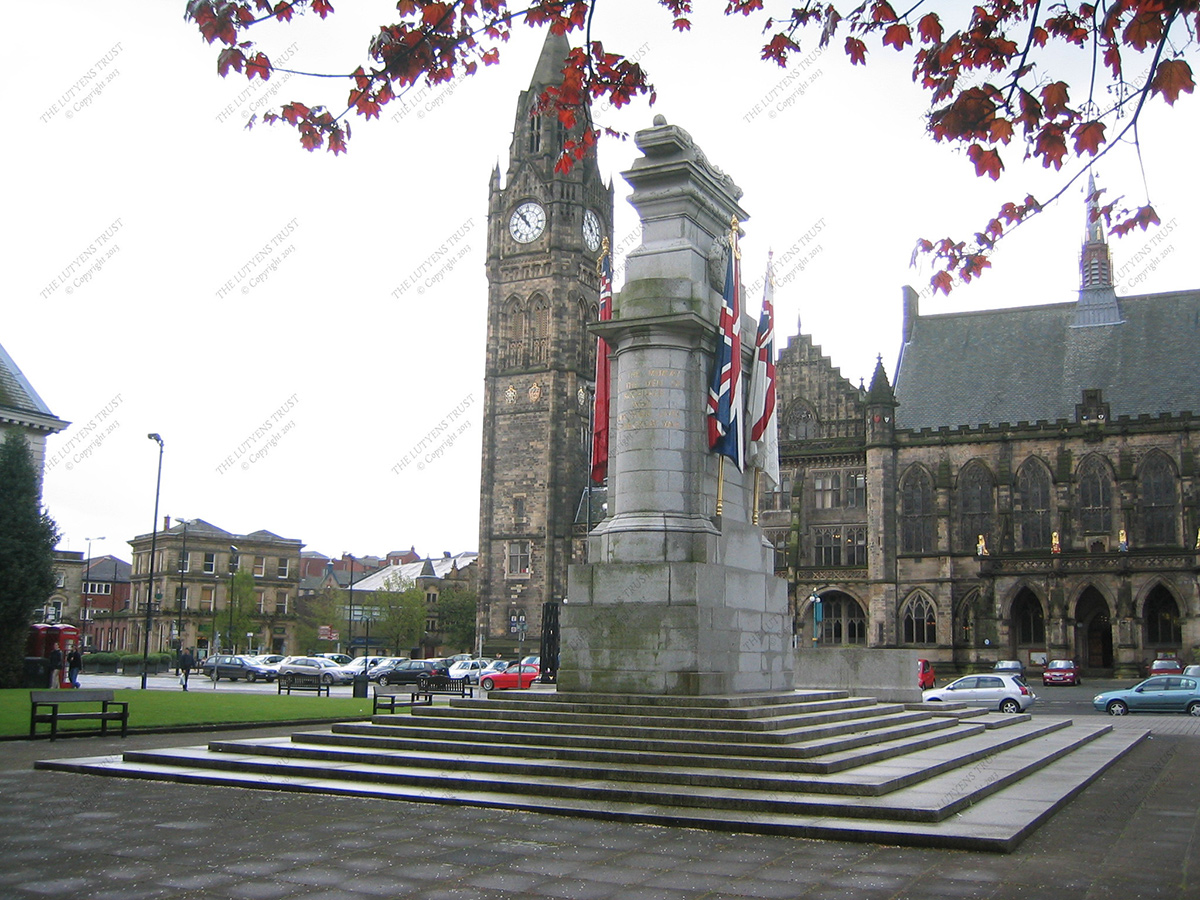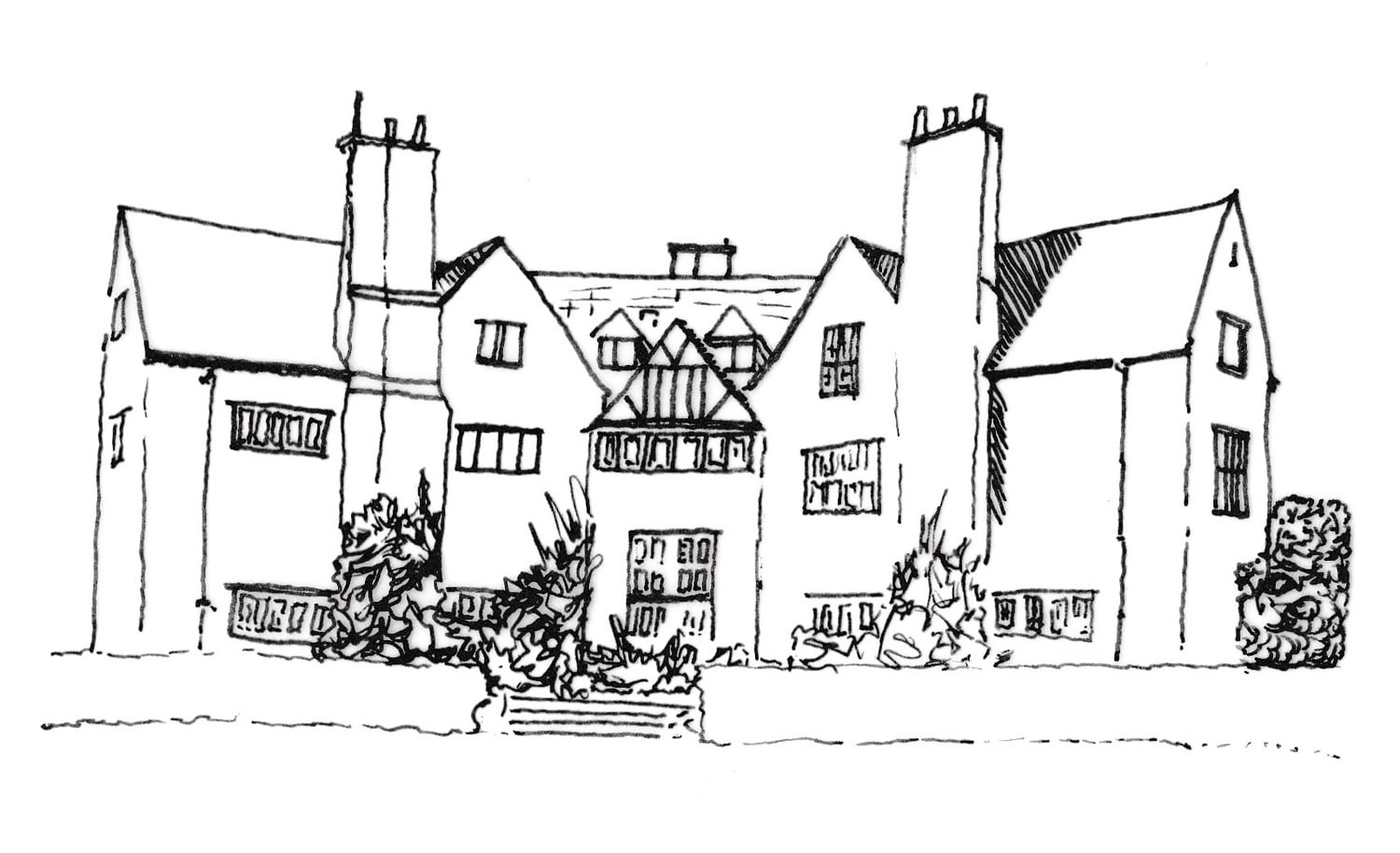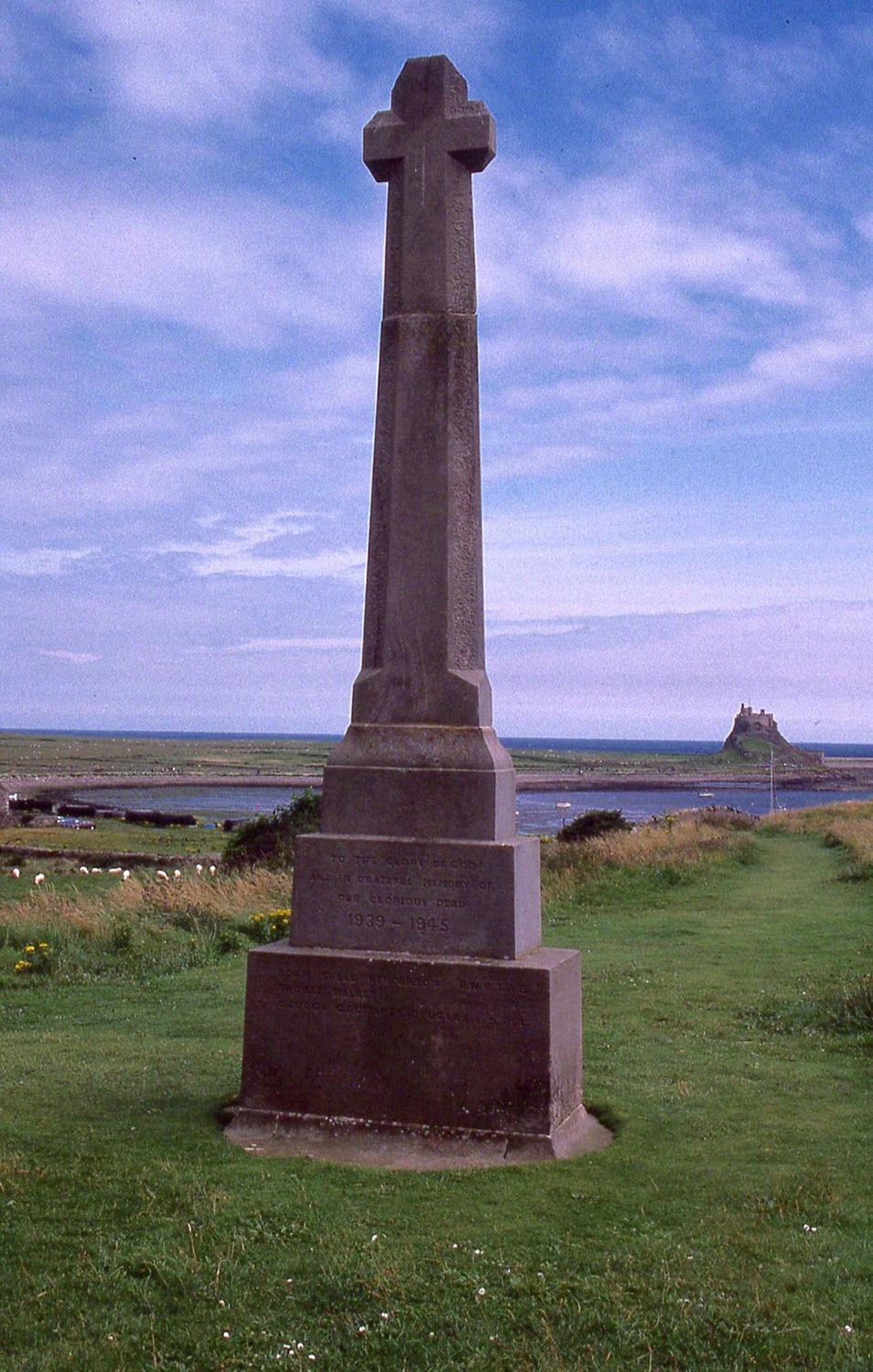
Description
The war memorial for Rochdale began life as a proposal for a commemorative bridge over the River Roch which was to contain both a Stone of Remembrance and a statue of a recumbent soldier. However, when it was decided to culvert the river instead, Lutyens was asked to revised his initial proposal. He decided to retain the War Stone and lifted the soldier to the top of a striking cenotaph with four painted stone flags.Both elements stand on a dais, very much in the manner of Southampton but the overall setting is more generous. Grey Cornish granite is used for all of the stonework with the four painted flags adding a colourful highlight. It is one of the architect’s best memorials.
The builders were Hodson’s of Nottingham and the cost was £12,611. It was unveiled on 26 November 1922 by the Rt Hon the Earl of Derby. (Contributor: Tim Skelton) Although it is flanked by the eternally still painted stone flags which Lutyens wanted to use on the Cenotaph, this is not a ‘cenotaph’ as it is not strictly speaking an ‘empty tomb’. The elaborately modelled plinth here carries a recumbent sculptured figure, and the design of this was evidently inspired by the Wellington Monument in St. Paul’s Cathedral. (Amery et al, 1981, Cat no.302)
War memorial, Esplanade, facing the Town Hall. By Lutyens, 1922. Stele of grey Cornish granite, bolder and less subtly modelled than his Portland stone memorial at Manchester. A fallen soldier lies offered up on top, as at Manchester; a disturbing image. Furled flags carved in stone and fully coloured on either side, as he wanted at Whitehall. Only the altar-like war stone in front exhibits Lutyens’s famous system of entasis. The sunken garden behind is the Second World War memorial. (Hartwell et al, 2005, p.597)
Bibliography
Amery, C., Richardson, M. and Stamp, G., (1981) Lutyens, the Work of the English Architect Sir Edwin Lutyens (1869-1944): Hayward Gallery London, 18 November 1981 – 31 January 1982. London: Arts Council of Great Britain.Hartwell C, Hyde M & Pevsner N (2005) Lancashire: Manchester and the South East. The Buildings of England. New Haven: Yale University Press.
Also Cited In
Butler, A., 1950. The architecture of Sir Edwin Lutyens: the Lutyens memorial series. Vol III: Town and Public Buildings: Memorials: The Metropolitan Cathedral, Liverpool, Country Life: London and Scibners: New York.Gliddon, G. and Skelton, T.J. (2008) Lutyens and the Great War. London: Frances Lincoln.
Listing Grade
IListing Reference
1084274Client




